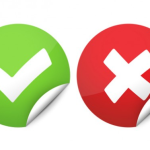Artificial intelligence has made remarkable strides in the realm of human-computer interaction. Among these advancements, Character AI has emerged as a fascinating development, offering users the ability to engage with AI personas in surprisingly lifelike ways. However, a growing trend within the community is the demand for a “no-filter” experience—Character AI without the restrictions that typically moderate conversations. This article delves into the potential of Character AI no filter, exploring its benefits, challenges, and future possibilities.
What Is Character AI No Filter?
Character AI is a system designed to emulate human-like conversations by creating unique personalities that can understand and respond contextually. The concept of “no-filter” refers to removing or minimizing moderation barriers in these interactions, allowing for free-form conversations. Users are drawn to this approach for its authenticity and lack of censorship, giving AI personalities the freedom to exhibit human-like complexity, including emotions, controversial opinions, or unrestrained creativity.
Benefits of No-Filter Character AI
- Enhanced Creativity
Unfiltered AI interactions provide a creative playground where users can explore out-of-the-box ideas, brainstorm freely, and enjoy unrestrained storytelling. For writers, gamers, or creators, this opens new possibilities for inspiration. - More Authentic Experiences
A no-filter AI feels more genuine as it mirrors the unmoderated nuances of human conversation. This can create deeper connections with users and improve the overall realism of interactions. - Educational Potential
Unfiltered AI has potential in educational environments, where open discussions and exposure to diverse perspectives can help users learn, challenge assumptions, and think critically.
Challenges and Concerns
- Ethical Considerations
Without filters, Character AI may generate content that is harmful, inappropriate, or offensive. Developers must navigate the thin line between enabling freedom of interaction and ensuring ethical responsibility. - User Safety
Unmoderated AI interactions could lead to misuse or negative experiences, especially for vulnerable audiences. Striking a balance between open conversations and user protection remains a pressing issue. - Bias Amplification
Unfiltered AI systems could inadvertently magnify biases in training data, producing results that may perpetuate stereotypes or misinformation. Developers need to adopt robust mechanisms to address this concern.
Pushing the Limits: Technological Hurdles
The push for Character AI no filter brings technical challenges. Developers need to ensure that the AI maintains coherence and relevance in conversations, even in unrestricted modes. Additionally, achieving nuanced moderation—where AI can adapt to user preferences without veering into problematic territory—requires sophisticated natural language processing algorithms.
The Role of User Responsibility
While the focus is often on developers, users play a significant role in shaping the future of no-filter Character AI. Responsible usage, combined with clear guidelines, can foster positive and meaningful interactions. Encouraging feedback loops where users report undesirable outputs can further refine the technology.
Future Outlook
As Character AI evolves, the no-filter model has the potential to redefine how we interact with AI systems. From hyper-personalized virtual assistants to advanced storytelling companions, the possibilities are vast. However, the journey toward fully unfiltered AI experiences will require ongoing collaboration between developers, users, and regulatory bodies.
Conclusion
Exploring the limits of Character AI no filter is both exciting and complex. It promises unprecedented creativity, realism, and engagement but comes with ethical and technical challenges that must be carefully addressed. As the technology advances, the focus should remain on striking a balance between freedom and responsibility, ensuring that these systems serve as tools for innovation while prioritizing user well-being.










